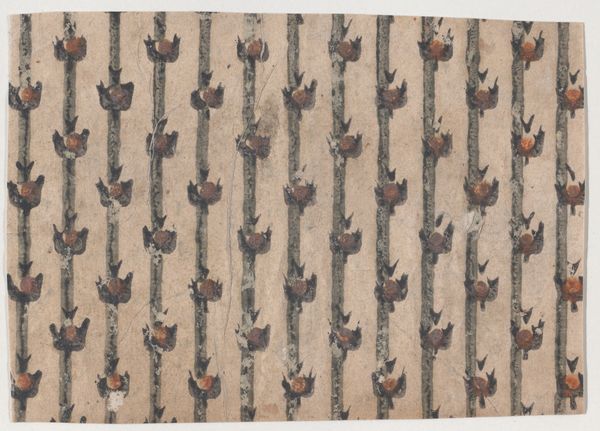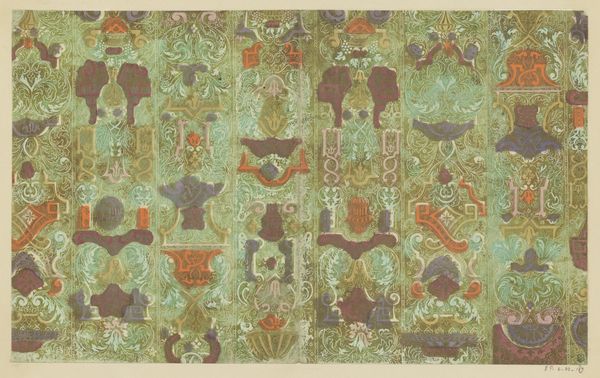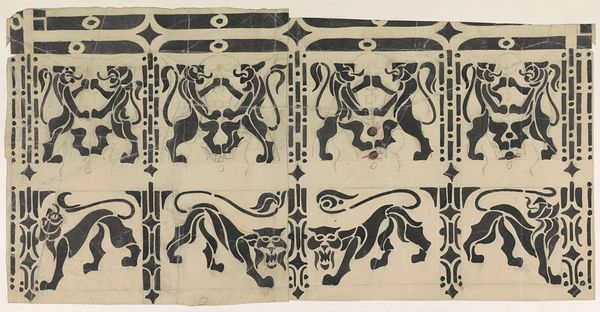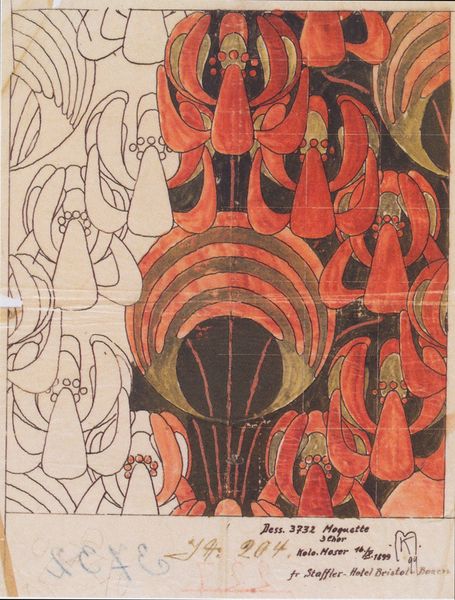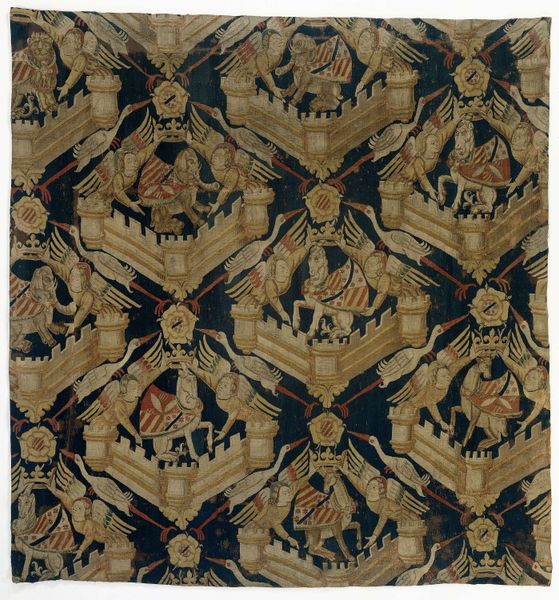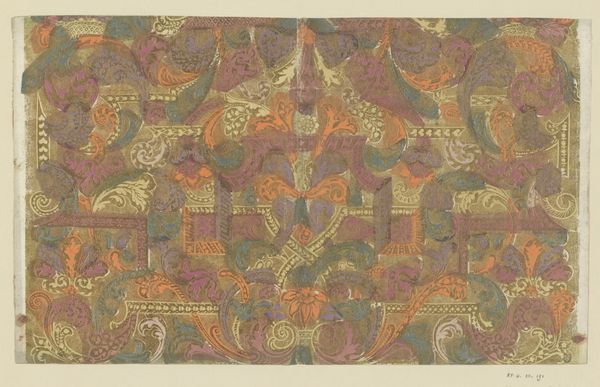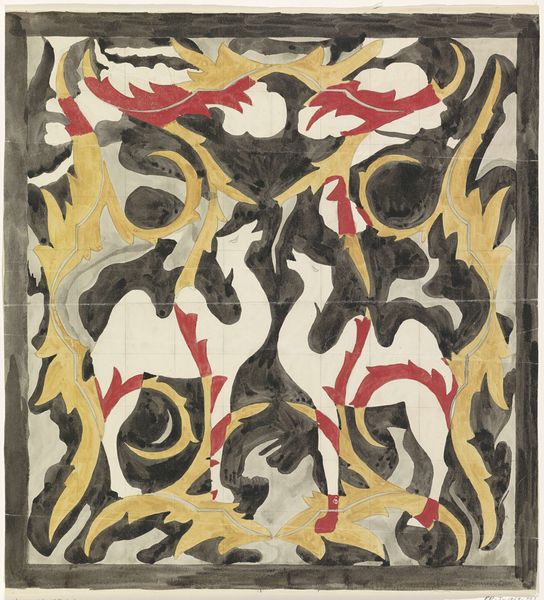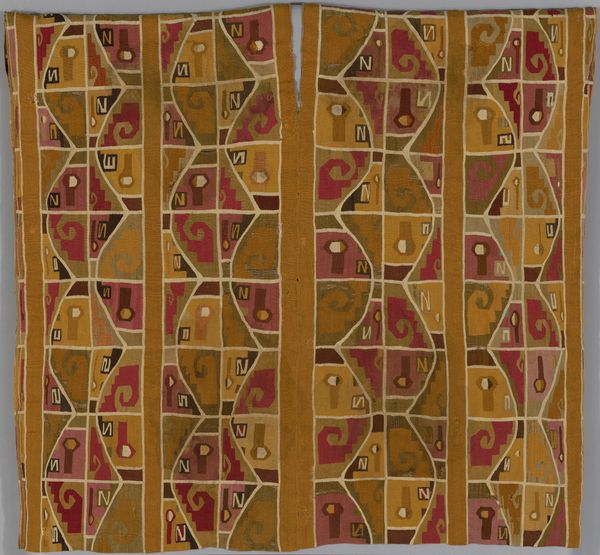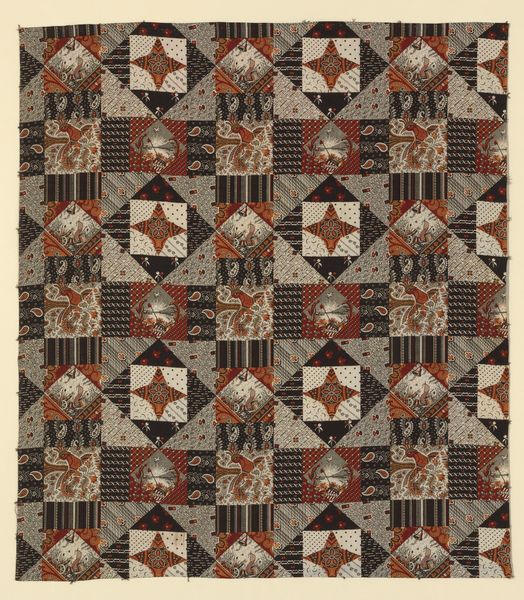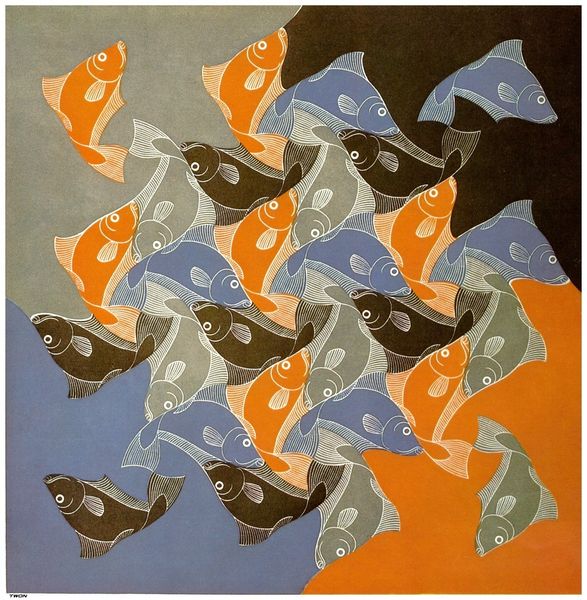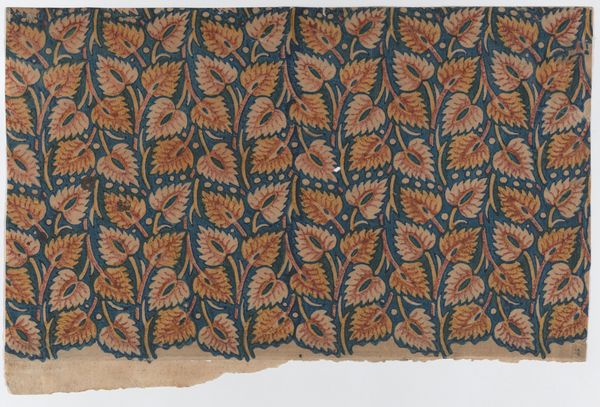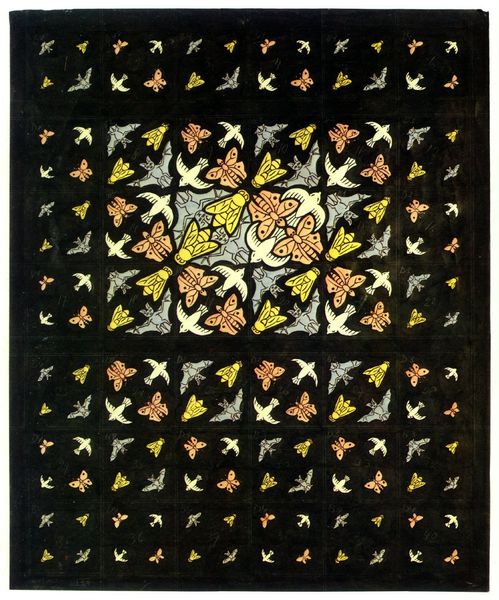
# print
#
pattern
#
geometric
#
abstraction
#
modernism
Copyright: M.C. Escher,Fair Use
Curator: Here we have Maurits Cornelis Escher's "Regular Division of the Plane kakemono," created in 1957. It is a print exploring tessellations and pattern. Editor: My immediate reaction is that this work seems both chaotic and deeply ordered. There's a sense of something ancient, like an artifact, but it feels strangely modern at the same time. Curator: Precisely. Note Escher’s meticulous arrangement of repeating motifs. Observe the interlocking shapes, seemingly organic, yet constructed with mathematical precision. The varying hues enhance the rhythmic pattern, don’t you agree? Editor: Certainly, the rhythmic pattern is key. But I am struck by the inherent cultural aspect of repeating symbols such as these. Repetitive design carries powerful weight when viewed through the lens of, say, ancient Egyptian wall carvings, but Escher’s patterns have none of that power. Or perhaps a diminished and corrupted power. Curator: I disagree with you that the cultural power is diminished. From a formalist perspective, what’s essential is Escher's sophisticated use of geometry and symmetry, as you indicated in your opening comment. His play with positive and negative space is particularly compelling in reading visual relationships between forms and shapes. The structure gives us clarity. Editor: And I find clarity by examining the circumstances of its reception! How might an embrace of such complex, mathematical art have helped validate an increasingly technocratic and specialized society after World War II? Escher’s work offers this kind of art for a society newly beholden to systems and codes. Curator: Intriguing idea! Escher's art challenges our perception. Through careful manipulation of form and shape, we are made aware of space as an art element in itself. Editor: An element that exists within a context, subject to interpretations contingent upon specific, historical forces. Curator: Ultimately, this exploration challenges conventional ideas of representation and form in mid-century modernist imagery. Editor: Agreed, and to consider it under such conditions, and such close attention, reveals how powerfully shaped the “form” of modern art can be.
Comments
No comments
Be the first to comment and join the conversation on the ultimate creative platform.
